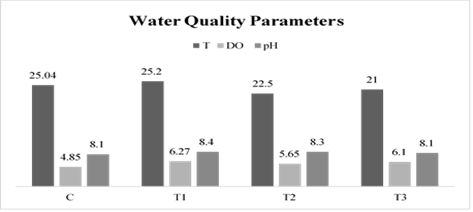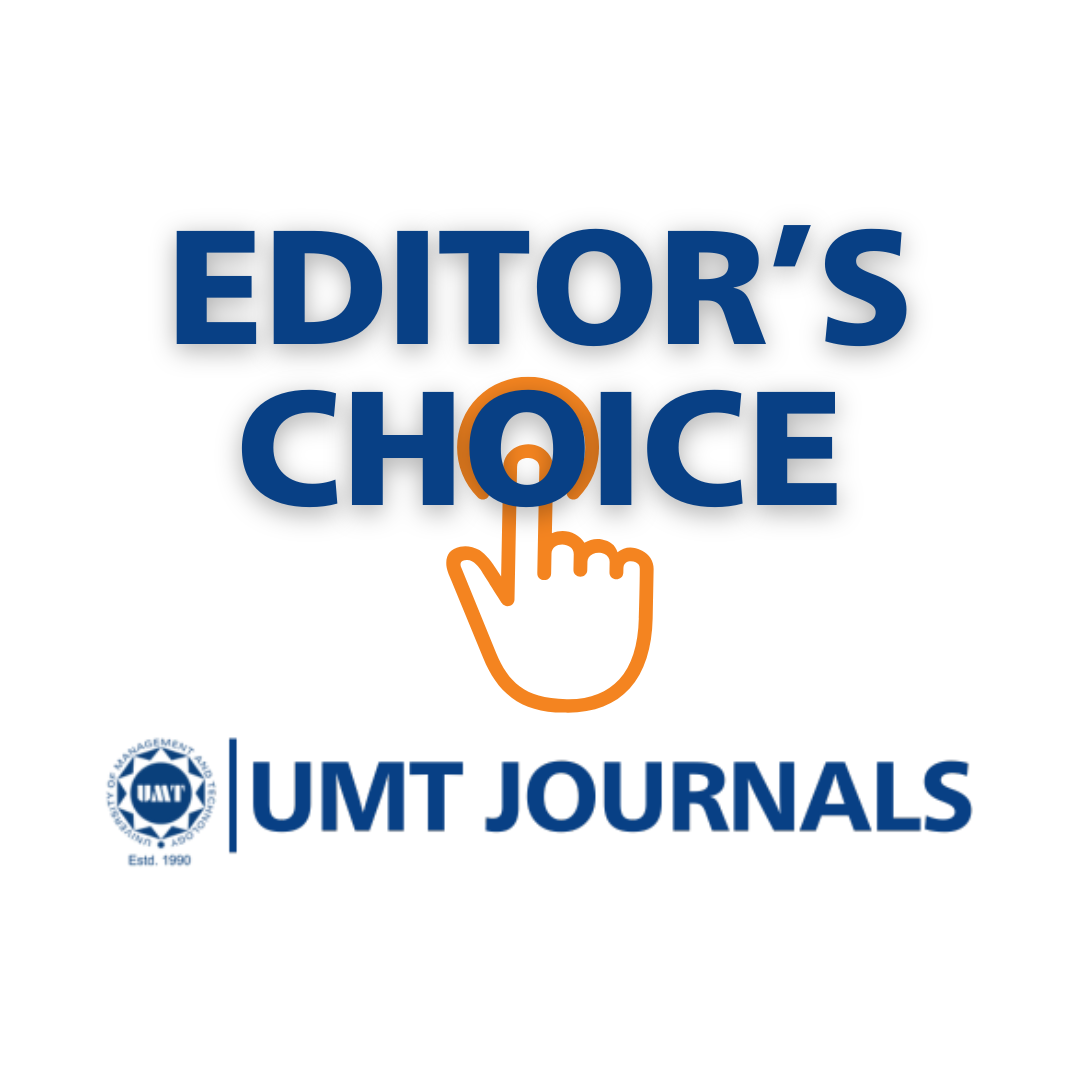Impact of Varying Protein Levels on the Growth Rate of Labeo rohita Reared in Glass Aquaria
Abstract
 Abstract Views: 0
Abstract Views: 0
Objectives. Aquaculture is an important technique used worldwide for the production of aquatic species. In this study, a monoculture experiment was performed to estimate the growth performance of Labeo rohita fingerlings under the influence of varying protein feeds used in various combinations in an intensive rearing system. It was found that different dietary protein levels significantly affected the growth rate of the above fish species, with an optimal protein level resulting in the highest growth performance. Previous studies showed that protein levels in the diet of Labeo rohita can influence growth, food conversion ratio, protein efficiency ratio, survival, and body composition. For instance, a diet containing 35% protein was found to significantly enhance growth, as compared to diets with lower or higher protein levels.
Methodology. Feeding trials were conducted to estimate the efficacy of the varying concentrations of dietary protein on the growth of Labeo rohita fingerlings in a glass aquaria for 75 days. The stocking density was 20 fish/aquarium. Diets containing 25%, 30%, and 35% protein were tested against a control containing 12% crude protein. The experiment was performed in the triplicate aquaria of glass. Fish were given feed at the rate of 4% of their body weight twice a day. Their growth performance was evaluated by measuring mean body weight gain (BWG), mean length gain (LG), feed conversion ratio (FCR), specific growth rate (SGR), and survival rate (SR) in different treatment groups. The proximate analysis of fish meat samples was conducted at the end of experiment.
Results. In the aquaria, fish fingerlings fed with 35% diet showed significantly greater weight gain (9.09 ± 0.09 g) as compared to those on other diets and control diet (6.8 ± 0.20). Simultaneously, a substantial increase in length gain was observed in fingerlings at 35% diet (8.2 ± 0.05), while the lowest weight gain (3.5±0.24g) was noted in those on control group diet. On the other hand, water quality variables, such as pH, temperature, dissolved oxygen, and electric conductivity remained constant.
Conclusion. It was concluded that a higher level of protein in the feed of Labeo rohita is directly related with the increased growth rate of fish.
Downloads
References
Food and Agriculture Organization of the United Nations. The state of world fisheries and aquaculture: opportunities and challenges. FAO Web site. https://www.fao.org/publications/fao-flagship-publications/the-state-of-world-fisheries-and-aquaculture/en. Accessed April 15, 2025.
Franz A, Nowak B. Functional food consumption in Germany: a lifestyle segmentation study (No. 1003). https://www.econstor.eu/bitstream/10419/30324/1/623864681.pdf
Kaimakoudi E, Polymeros K, Schinaraki MG, Batzios C. Consumers’ attitudes towards fisheries products. Proc Technol. 2013;8:90–96. https://doi.org/10.1016/j.protcy.2013.11.013
Ahmad S, Hera Z, Hanif MS, Syed AH. Effects of carbosulfan on the biology of bird cherry oat aphid. Biol Clin Sci Res J. 2020;2020:e014.
Galappaththi EK, Ichien ST, Hyman AA, Aubrac CJ, Ford JD. Climate change adaptation in aquaculture. Rev Aquacul. 2020;12(4):2160–2176.
Food and Agriculture Organization of the United Nations. Investment potential on inland fisheries and freshwater aquaculture project UTF/PAK/ 092). Report No. 03/063 CP-PAK.2003.
Rudolf K. Fish Inspection and Quality. Fishing News Books Ltd; 1971.
Froese R. Cube law, condition factor and weight–length relationships: history, meta‐analysis and recommendations. J Appl Ichthyol. 2006;22(4):241–253. https://doi.org/10.1111/j.1439-0426.2006.00805.x
Frimodt C. Multilingual Illustrated Guide to The World's Commercial Coldwater Fish. Fishing News Books Ltd; 1995.
Khan HA, Jhingran VG. Synopsis of biological data on Rohu Labeo rohita (Ham.1822). Food and Agriculture Organization of the United Nations. https://openknowledge.fao.org/items/116afc7c-c1d9-44b7-a476-deb38b585917. Published 1975. Accessed April 04, 2024.
Hussain SM, Javed M, Javid A, Javid T, Hussain N. Growth responses of Catla catla, Labeo rohita and Cirrhinas mrigala during chronic exposure of iron. Pak J Agri Sci. 2011;48(3):225–230.
Soltan NM, Soaudy MR, Abdella MM, Hassaan MS. Partial dietary fishmeal replacement with mixture of plant protein sources supplement¬ed with exogenous enzymes modify growth performance, digestibility, intestinal morphology, haemato-biochemical and immune responses for Nile Tilapia, Oreochromis niloticus. Animal Feed Sci Technol. 2023;299:e115642. https://doi.org/10.1016/j.anifeedsci.2023.115642
Haetami K, Amanda TR, Abun A. The phytase and microbial potential in fish feed: a review. J Biol Trop. 2025;25(1):106–113. https://doi.org/10.29303/jbt.v25i1.8241
Iqbal KJ, Ashraf M, Abbas F, et al. Effect of plant-fishmeal and plant by product based feed on growth, body composition and organoleptic flesh qualities of Labeo rohita. Pak J Zool. 2014;46:253–260.
Shah MA. Use of Apricot Kernel Press Cake as a Growth Promotor in The Supplementary Feed of Common Carp (Cyprinus Carpio Var. Communis) Fingerlings Under Temperate Conditions of Kashmir (dissertation). Jammu and Kashmir: Sher-e-Kashmir University of Agricultural Sciences & Technology of Kashmir; 2021.
Zeb J, Tufail1 S, Saboohi N, et al. Effect of varying levels of lipids and proteins on the growth indices and fatty acid profile of Labeo rohita (Rohu). Pak J Zool. 2022;54(2):615–623.
Abdel-Latif HMR, Abdel-Tawwab M, Khafaga AF, Dawood MAO. Dietary oregano essential oil improved the growth performance via enhancing the intestinal morphometry and hepato-renal functions of common carp (Cyprinus carpio L.) fingerlings. Aquaculture. 2020;526:e735432. https://doi.org/10.1016/j.aquaculture.2020.735432
Khalid MA, Hussain SM, Ali S, et al. Impact of feeding biochar sources in rohu (Labeo rohita): evaluating the growth, nutrient absorption, carcass composition, haematology and mineral status. J Anim Physiol Anim Nutr. 2024;108(4):1028–1037. https://doi.org/10.1111/jpn.13949
Yue K, Shen Y. An overview of disruptive technologies for aquacul-ture. Aquacul Fish. 2022;7(2):111–120. https://doi.org/10.1016/j.aaf.2021.04.009
Rangacharyulu PV, Paul BN, Nandi S, Sarkar S, Mukhopadhyay PK. Effect of different protein and energy levels on growth, nitrogen metabolism and body composition of rohu (Labeo rohita). J Aquacul. 2000;8:17–24. https://doi.org/10.61885/joa.v8.2000.87
Dharmakar P, Aanand S, Kumar JSS, Ande MP, Pereira PJJ. Ef¬ficiency of fermented sunflower meal as an alternate protein source in the diet of larval rohu (Labeo rohita). Scientist. 2023;2:106–112.

Copyright (c) 2025 Huma Shafique, Aqeela Ashraf, Umara Nuzhat, Naira Nuzhat

This work is licensed under a Creative Commons Attribution 4.0 International License.
BSR follows an open-access publishing policy and full text of all published articles is available free, immediately upon publication of an issue. The journal’s contents are published and distributed under the terms of the Creative Commons Attribution 4.0 International (CC-BY 4.0) license. Thus, the work submitted to the journal implies that it is original, unpublished work of the authors (neither published previously nor accepted/under consideration for publication elsewhere). On acceptance of a manuscript for publication, a corresponding author on the behalf of all co-authors of the manuscript will sign and submit a completed the Copyright and Author Consent Form.









